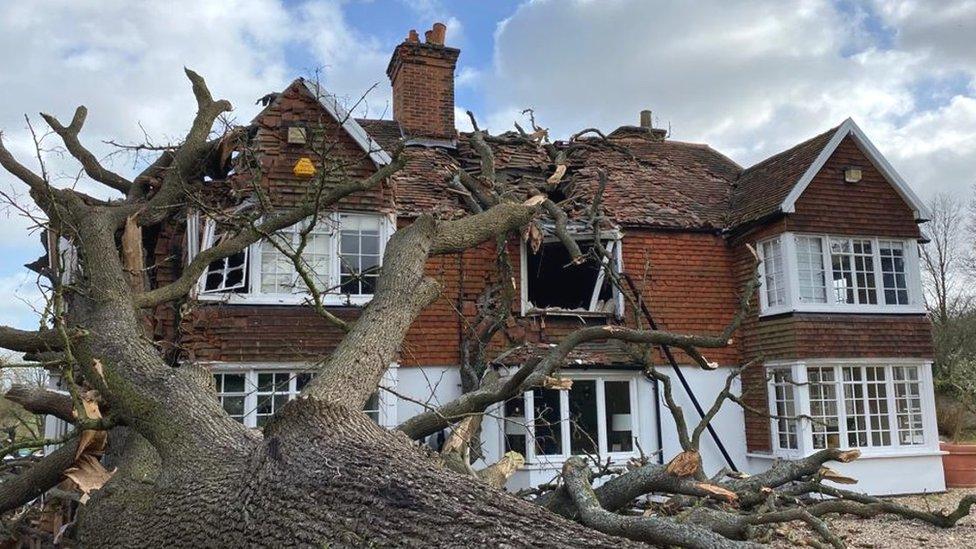Wakehurst botanic gardens 'sad' as Storm Eunice claims 30 trees
- Published
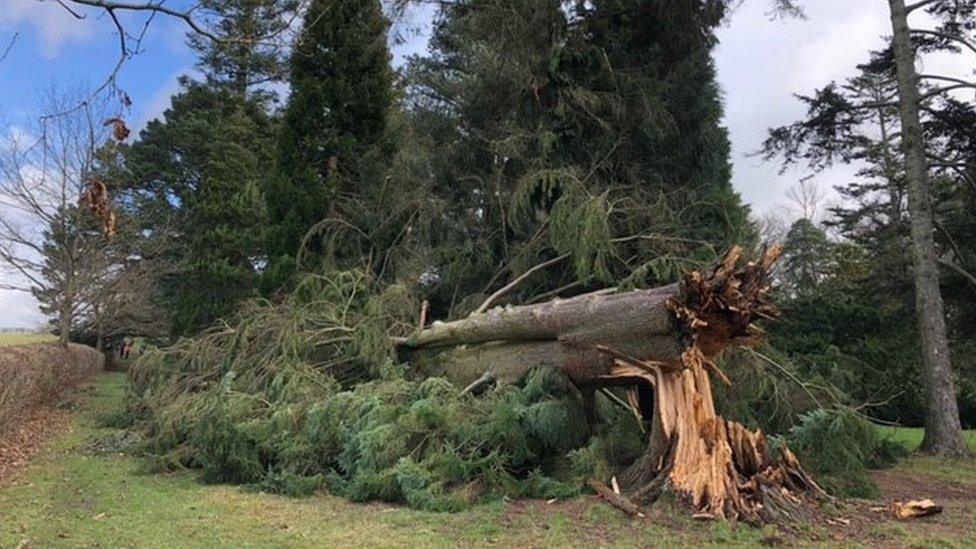
The gardens saw gusts of up to 70 mph during Friday's storm
About 30 trees fell at Wakehurst in West Sussex during the high winds of Storm Eunice, including one that was more than 100 years old.
The gardens saw gusts of up to 70mph on Friday, according to head of landscape and horticulture, Iain Parkinson.
"It did cause significant damage, which is very, very sad," he said.
However, Friday's loss is a fraction of the 20,000 trees which fell at the Royal Botanic Gardens during the Great Storm of 1987.
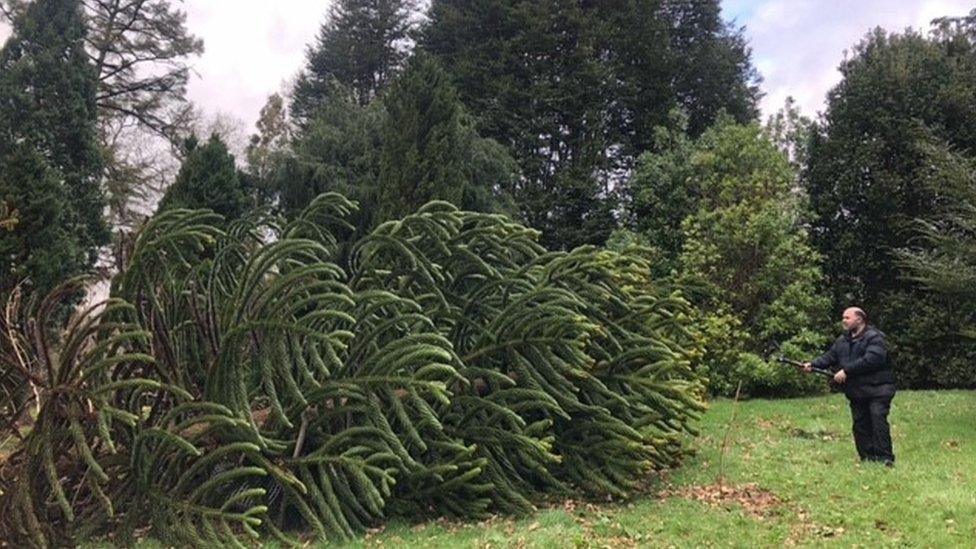
A monkey puzzle tree, planted 30 years ago, was one of the casualties
Announcing the gardens were closed on Friday, Wakehurst said: "This isn't a decision we've taken lightly. We always put the safety of our staff and visitors first."
Dr James Canton, author of The Oak Papers, said: "Whenever we have these storm events we are reminded of the importance of trees in our landscapes.
"The fact that they can live far longer than humans means they do become these stable points on the landscapes and when we lose trees it can be felt as a grief."
Most of the trees that fell were conifers, which Mr Parkinson explained was because "they have foliage and that provides a sail for the wind".
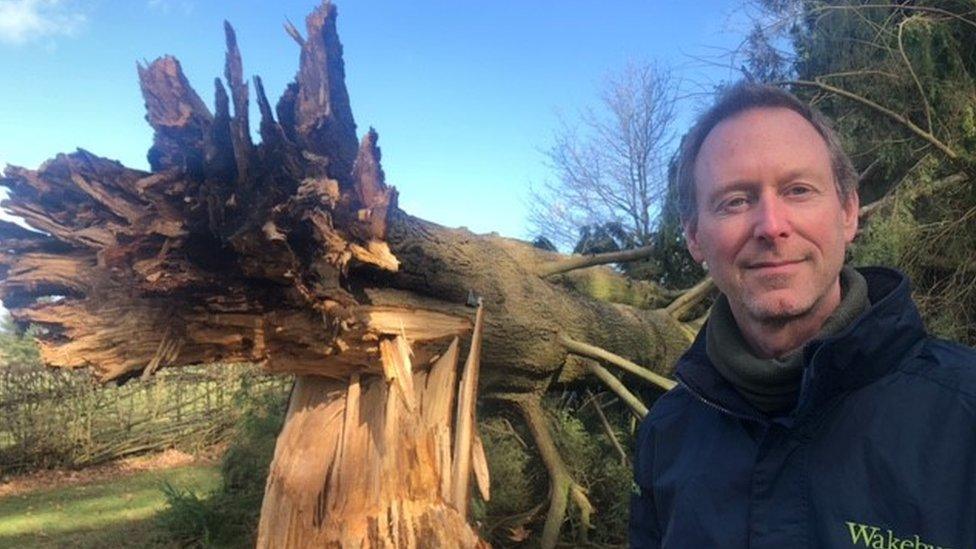
Mr Parkinson said they were very sad to lost a Western Hemlock that was about 100 years old
The largest tree to fall was a Western Hemlock from the west coast of the United States, which was planted by Wakehurst founder Gerald Loder about 100 years ago.
"Visitors have been contacting us to ask how Wakehurst faired on Friday and I think that shows the special impact trees have on all of our lives," he added.
Climbing arborist at Wakehurst Katie Thorpe said the storm also provided new opportunities.
She said: "I think because it's natural and a force of nature, it's OK. It opens up space for other trees, and we plant every winter."

Follow BBC South East on Facebook, external, on Twitter, external, and on Instagram, external. Send your story ideas to southeasttoday@bbc.co.uk.
Related topics
- Published18 February 2022
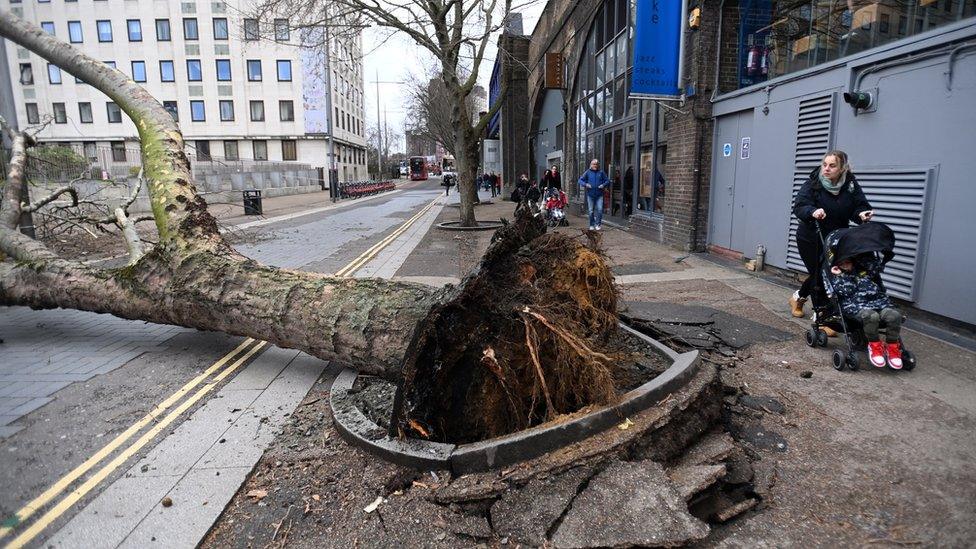
- Published19 February 2022
